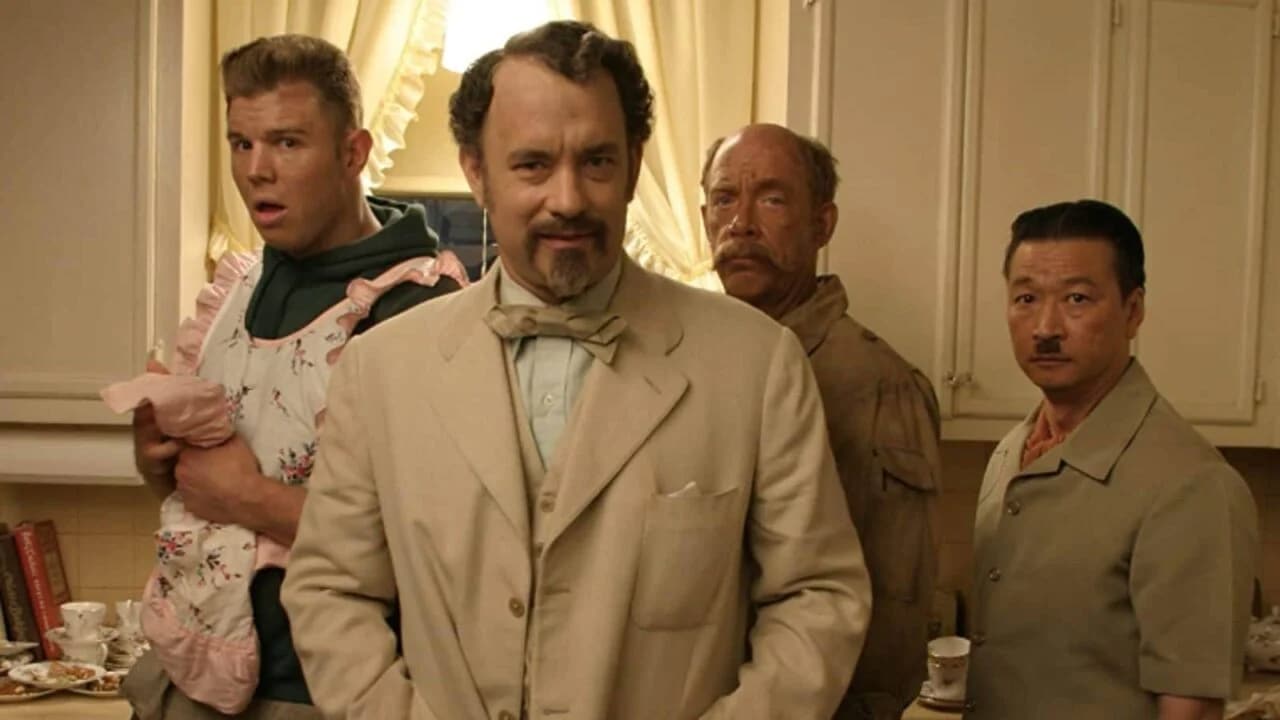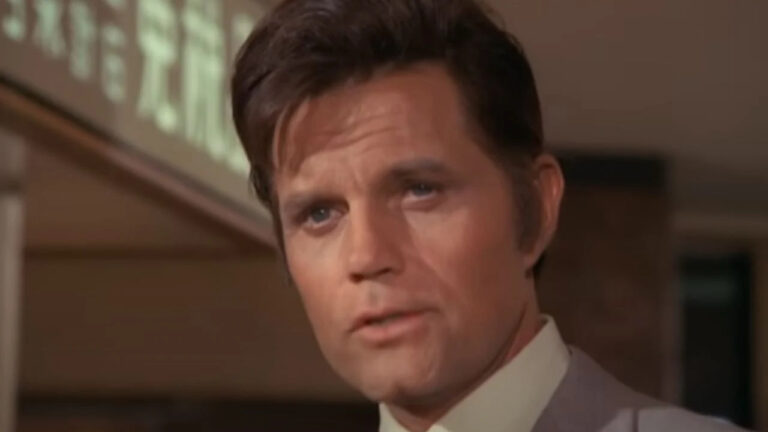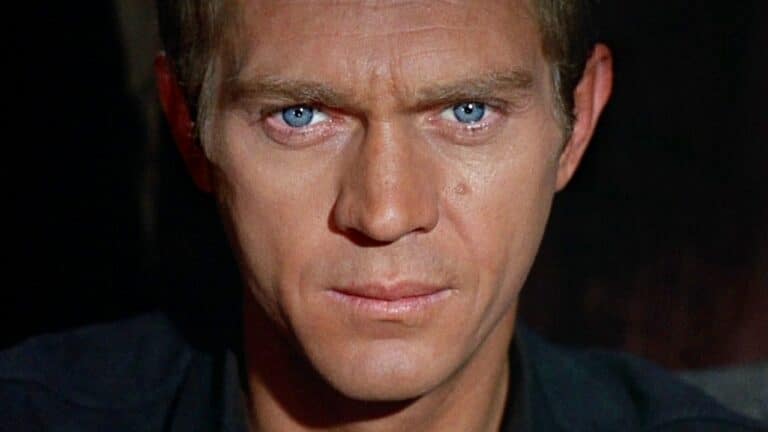When Good Movie Makers Go Bad: Terrible Films from Greatest Directors

Nobody’s perfect. Not even the greatest movie directors.
No matter how talented a filmmaker is, if they make enough movies and take enough chances, they will turn out a stinker every once in a while. Sometimes, these misfires occur during a future great’s embryonic stage, as they try to figure out their voice. Other times, a director tries a different method, an experiment that ends in failure. And sometimes, things just go wrong, even with a genius behind the camera.
While that might sound negative, no one should be embarrassed when a film goes wrong. Cinematic shortcomings can highlight everything great about a creator’s best works, and even mistakes lead to remarkable revelations. So while none of these movies define their directors’ legacies, they do help fans see why the filmmaker has become such a legend in the first place.
1. Memoirs of an Invisible Man (1992)

No one would accuse John Carpenter of being a fancy director, least of all Carpenter himself. The unassuming Carpenter has a workmanlike attitude about his work, even masterpieces such as Halloween and The Thing. His steady camera movements, nihilistic worldview, and eye for exquisite compositions elevate even the most unassuming project into something horrifying and sublime.
Until he met Chevy Chase, that is. Based on the book by H.F. Saint and written by Robert Collector, Dana Olsen, and William Goldman, Memoirs of an Invisible Man stars Chase as an irresponsible businessman who turns invisible. Instead of the horror that Carpenter does best, Memoirs leans more toward comedy and drama.
Although Carpenter has done both well in the past, as demonstrated in Starman, he can’t tighten the slack of Memoirs, through which Chase sleepwalks with as much disinterest as his character.
2. Jack (1996)

If someone caught Jack on a lazy Saturday afternoon, watching it from the corner of their eyes while they did their taxes or folded their socks, they might not think it such a bad flick. After all, it’s full of the same Robin Williams antics that made him famous. Heck, some might even buy into the schmaltzy story of a boy (Williams) with a rare disease that causes him to age at a rapid rate. No one would call Jack good, but they might find it passable, if they’re in a forgiving mood.
But when put within the context of director Francis Ford Coppola’s filmography, Jack drops below the level of failure and becomes a travesty. Coppola made unimpeachable masterpieces such as the Godfather films and Apocalypse Now. Even his lesser movies made for interesting misfires, such as Twixt and One From the Heart.
Unlike his slick James Grisham thriller The Rainmaker, Jack feels like the most lazy mainstream junk. Coppola shoots the script by James DeMonaco (who would go on to create the Purge franchise) and Gary Nadeau like a defeated man, letting Williams run wild and adding no flavor to the manipulative story.
3. New York, New York (1977)

Forget what ignorant people on the internet say. Martin Scorsese makes far more than gangster pictures. In addition to Goodfellas and Casino, Scorsese also directed the Edith Wharton adaptation The Age of Innocence, religious films such as Kundun and The Last Temptation of Christ, and historical pictures Killers of the Flower Moon and The Aviator.
Given his range and love for all things cinematic, it comes as no surprise that Scorsese would make a musical with New York, New York. However, the film came at a transitional point in the director’s career, one that led to decisions that undermined his approach.
Written by Earl Mac Rauch and Mardik Martin, New York, New York presents the rocky relationship between a singer (Liza Minnelli) and a saxophonist (Robert De Niro). As always, Scorsese works some excellent songs into the soundtrack. But he also lets Minnelli and De Niro play miserable people, ending not in a work with compelling dynamics, but a muddled mess of a movie.
4. The Laundromat (2017)

Call it The Small Short. Like the bombastic, and popular, Adam McKay movie The Big Short, The Laundromat takes a glossy and post-modern approach to describing the complexities of the modern global economy. Steven Soderbergh should be the guy to pull off such a project, even in the experimental phase he entered after returning from retirement in 2016. After all, Traffic, Erin Brockovich, and Magic Mike prove his ability to mix star-powered Hollywood entertainment with pressing social themes.
Instead, The Laundromat gets everything wrong. Written by Scott Z. Burns, who adapts the nonfiction book Secrecy World by Jake Bernstein, The Laundromat mixes fourth-wall-breaking monologues by Antonio Banderas and Gary Oldman with anecdotes about financial misdeeds and a grounded tale of a midwestern widower (Meryl Streep) made bankrupt by these bad actors.
Worse, Streep also dons a false nose and padding to portray a Latin woman, up until the final moments of the film, in which she removes her make-up while preaching to the camera about problems with financial regulations. The Laundromat has an important point, but Soderbergh drops the ball while making it.
5. Hook (1991)

Steven Spielberg became one of the world’s most beloved directors in part because of his blockbuster sensibilities. Jaws, Jurassic Park, and Raiders of the Lost Ark feature masterful adventure scenes, while films such as Lincoln and West Side Story inspire awe with their perfect blocking and cinematography. More than these technical skills, Spielberg spoke for a generation of children, using movies such as E.T. The Extraterrestrial and Close Encounters of the Third Kind to portray the modern American family.
In theory, Hook seems like a project designed to showcase the best of Spielberg’s abilities. The screenplay by Jim V. Hart and Malia Scotch Marmo deals with a grown-up Peter Pan (Robin Williams), who has forgotten about his days in Never Neverland and became an inattentive father. When Captain Hook (Dustin Hoffman) kidnaps Peter’s children, he must return to the world he left and recover his youthful energy.
Whatever value the story may have, Spielberg lost his ability to take a children’s viewpoint. Sequences involving tables covered with frosted food and crowing competitions irritate instead of inspire, making Hook feel like a sad Spielberg rip-off instead of the real thing.
6. Fedora (1978)

With his cynical worldview and ear for rapid dialogue, Billy Wilder became one of Tinsel Town’s greatest screenwriters, renowned for his words even more than his solid direction. Movies such as Ace in the Hole, Double Indemnity, and The Apartment capture his deft balance between misanthropy and humanity, a balancing act that few can walk.
By the time Wilder got to his second-to-last movie, Fedora, some of that skill had slipped. Wilder returns to the entertainment industry, the subject of one of his greatest movies, Sunset Boulevard. Fedora begins with the death of a beloved screen starlet and takes shots at the beauty industry, trying to uncover the ugly side of the good life.
Although Wilder’s bile has not diminished, the aim of his script, co-written with frequent collaborator I. A. L. Diamond, wavers, forming gags that don’t bite and observations that confuse instead of reveal.
7. The Immortal Story (1968)

Every film fan knows that Orson Welles made his film debut directing Citizen Kane, considered one of the greatest movies of all time, at the age of 25. They also know that his follow-up, The Magnificent Ambersons, may have exceeded Kane had the studio not meddled with him. Despite such an auspicious beginning, Welles fell back to Earth, showing just the occasional flash of brilliance in the 60s and 70s.
Although his posthumous movie The Other Side of the Wind is far worse, Peter Bogdanovich and others who finished the work share some of the blame. When it comes to The Immortal Story, all the fault falls on Welles.
Even at 60 minutes, The Immortal Story tests audiences’ attention, a thin narrative in which the merchant Mr. Clay (Welles) manipulates a romance between young lovers (Roger Coggio and Jeanne Moreau). The obnoxious make-up Welles wears might keep viewers’ attention, but nothing else in the movie is worth watching.
8. Detroit (2017)

In The Hurt Locker and Point Break, Kathryn Bigelow established herself as one of the keenest observers of self-destructive masculinity. Her tales of men who go to extremes, destroying their minds and bodies in the process felt earned and moving. Furthermore, the post-9/11 story Zero Dark Thirty proved that Bigelow could thread a delicate needle with difficult topics, somehow creating a film that neither endorsed nor decried the use of torture.
But with Detroit, Bigelow tripped over every obstacle avoided in other instances. Detroit tells the true story of white police officers laying siege to Black clubgoers in 1967. Working again with Zero Dark Thirty screenwriter Mark Boal, Bigelow attempts to deal with pressing social issues through a genre lens. Instead, Detroit fumbles its themes, feeling more like an upsetting exploitation picture than a proper drama.
9. Maps to the Stars (2014)

David Cronenberg came from the world of Canadian independent horror, where he made stomach-churning movies with psychological depth. Cronenberg became a favorite in America with hits such as The Fly and Videodrome but maintained an interest in less gory fare, such as his Stephen King adaptation The Dead Zone.
In the 2010s, Cronenberg devoted himself to psychological dramas, with mixed results. The Don DeLillo adaptation Cosmopolis and the Freud biopic A Dangerous Method don’t meet the director’s usual standards, but they work better than Maps to the Stars.
As its name suggests, Maps to the Stars takes place in Hollywood, where the family of the child actor Benjie Weiss (Evan Bird) and TV psychologist Stafford Weiss (John Cusack), who treats aging actress Havana Segrand (Julianne Moore). Cronenberg and screenwriter Bruce Wagner attempt to explore the mental states of people destroyed by the excesses of fame, but the director proves himself a poor chronicler of the hyper-real. The observations in Maps to the Stars feel trite and the humor clangs, making viewers long for more body horror.
10. She Hate Me (2004)

As demonstrated by movies such as Do the Right Thing, Malcolm X, and BlackKklansman, Spike Lee has no use for subtlety. But he launches his direct attacks on systemic racism, gentrification, and other social ills with technical proficiency and a commitment to innovation. Yet, for all of his skills as a storyteller, Lee often struggles to write female characters with the same level of complexity as he does the male characters.
That issue comes to the fore with She Hate Me, which came between mainstream triumphs The 25th Hour and Inside Man. Co-written with Michael Genet, She Hate Me stars Anthony Mackie as a financial player laid low by scandal, who decides to earn money by donating to fertility clinics.
The endeavor brings him back into contact with his ex-fiancée (Kerry Washington), who left him for another woman. She Hate Me aspires to classic screwball humor, but Lee’s bombastic approach does not suit the various politics at play, creating a loud, unpleasant mess.
11. Rich and Strange (1931)

When film fans think of Alfred Hitchcock, they think of Hollywood masterworks such as Vertigo and Psycho. They don’t always remember that Hitchcock had a long career in the British film industry, where he learned the tools of his trade. While working on silent films and early sound pictures, Hitchcock gained the skills that would make him the Master of Suspense.
Released mere years before his breakouts The Man Who Knew Too Much (1934) and The 39 Steps, Rich and Strange (also known as East of Shanghai) features a Hitchcock who understands the fundamentals of filmmaking, but has not yet found his voice.
The script he co-wrote with Alma Reville and Val Valentine features very little dialogue, going almost silent after the first act, with Hitchcock instructing stars Henry Kendall and Joan Barry to express themselves through bold gestures and body language instead of words. The experiment distracts from the tensions that Hitchcock finds in other works, leaving Rich and Strange a thin and familiar experience.
12. The Ladykillers (2004)

Against what most would assume of two quiet midwestern Jewish boys, Joel and Ethan Coen are American masters because they excel at translating classic genres for modern audiences. From their noir debut Blood Simple to their hit farce O Brother, Where Art Thou? to the dorm room staple The Big Lebowski, the Coen Bros know how to make stylized feel accessible for today’s audiences.
The Ladykillers attempts to remake a straight-laced English comedy starring Alec Guinness in his pre-Obi-Wan Kenobi days. Tom Hanks steps into the Guinness role as the con man/Southern aristocrat Goldthwaite Higginson Dorr Ph.D., who plans a heist operation from the house he rents from a straight-laced matriarch (Irma P. Hall).
The casting proves a disaster for The Ladykillers. Hanks puts in one of his worst performances as Dorr, overplaying his character’s big personality, while the script invokes far too many racial stereotypes, making the movie more uncomfortable than funny.
13. Killer’s Kiss (1955)

There may never be another filmmaker like Stanley Kubrick, a man who helmed challenging and ambitious films such as 2001: A Space Odyssey and The Shining but also enjoyed unmatched popularity in his day, pushing the art form forward while creating hit films. Of course, Kubrick didn’t emerge fully formed, so the problems in his compelling but flawed debut Fear and Desire aren’t surprising, nor does one blame 1956’s The Killing for failing to live up to Paths of Glory in the following year.
Yet, even within those exceptions, Killer’s Kiss belongs at the bottom of Kubrick’s filmography just because it’s boring. The film stars Jamie Smith as small-time boxer Davey Gordon, who intercedes in the relationship between his neighbor, a taxi dancer called Gloria (Irene Kane) and the dangerous man who employs her (Frank Silvera).
Killer’s Kiss follows a standard noir plot, which will satisfy fans of the genre, but bore everyone else. In fact, Killer’s Kiss feels like it could be made by anyone, something that cannot be said about any other Kubrick film.
14. Sabrina (1995)

More of a working man director than an auteur, Sydney Pollack doesn’t have quite the same highs as the others on this list, nor the same lows. At his best, Pollack turns in well-crafted crowd-pleasers such as Tootsie and Three Days of the Condor. At his worst, he turns in unremarkable but functional films, at least until he remade the Billy Wilder movie Sabrina.
Sabrina tells the story of two rich brothers, one shallow and the other distant, who fall for a poor girl turned debutante. Wilder’s version with Humphrey Bogart, Audrey Hepburn, and William Holden.
Pollack’s version falls apart right from the beginning because it cannot match the star power of the original. Julia Ormond falls far short of Hepburn and while Greg Kinnear may work as a cad in a TV movie, he has none of Holden’s acumen. Worst of all, Pollack’s Sabrina stars Harrison Ford, who tries to replicate Bogie’s effortless cool by playing grumpy and checked out.
15. Following (1998)

With his Academy Award win for Oppenheimer, Christopher Nolan has become the blockbuster auteur of his generation. Oppenheimer completed a trajectory that Nolan had been traveling for years, with his complex, puzzle box films such as The Dark Knight and Inception. For all of his popularity, Nolan’s movies don’t feel like crowd-pleasers, with their overlapping timelines and muddled dialogue. And yet, he commands huge budgets and big-name stars.
That journey began on a much smaller scale. Instead of going to film school, Nolan made his first movie Following, with a microscopic budget of just $6000. Most directors start with rough first films, movies not often held against them.
Even so, Following deserves attention because Nolan made it with such intention, staking ground that he would cover in the future. Following features a character named Cobb (Alex Haw), but the main characters are identified according to their function within the story, with protagonist The Young Man (Jeremy Theobald) and love interest The Blonde (Lucy Russell). Nolan developed these ideas on a much grander scale in his later work, rendering Following unnecessary.
16. Hollow Man (2000)

Even before he came to America from his native Netherlands, Paul Verhoeven knew how to push buttons. His teen drama Spetters drew protests from various quarters and The Fourth Man scandalized viewers with its sensuality and gore. Verhoeven didn’t slow down when he got to America, thrilling and upsetting viewers with the excessive action movie Robocop and the aggressive Showgirls. And yet, even Verhoeven’s most provocations have an intelligence that makes them all the more irresistible.
Except, that is, for Hollow Man. An update on the classic Invisible Man story by H.G. Wells, Hollow Man has the roots of a great Verhoeven film.
But the script by Andrew W. Marlowe doesn’t offer anything that the Wells novel (and Plato’s Republic before it) didn’t already cover, with scientist Craine (Kevin Bacon) going mad with power after gaining the power to turn invisible. Without a thematic grounding to work with, Verhoeven focuses instead on the disturbing qualities of the story, of which there are many.
17. Film Socialisme (2010)

A major figure in the French New Wave movement, Jean-Luc Godard became a great director because he pushed boundaries. His films Breathless and Weekend opened cinema to new possibilities, blending the realism of the Italians with fantastical elements. Rather than rest on his laurels, Godard continued to experiment, hoping to uncover new cinematic horizons.
Of course, not every experiment works, as Godard discovered with Film Socialisme. The first third follows random characters (including punk legend Patti Smith) upon a cruise ship, the second involves children holding court at a gas station, while the third plays like a travelogue of various famous cities.
At no point does the film reach any thematic resonance, playing more like a slideshow instead of a movie. In other words, Film Socialisme sets back cinematic arts instead of pushing the media forward.
18. For Love of the Game (1999)

For some reason, Kevin Costner saw Evil Dead 2 and The Quick and the Dead and thought Sam Raimi should direct his passion project, For Love of the Game, the story of an aging baseball player and his complicated love life. With his wild camera movements, melodramatic style, and love of slapstick, Raimi made crowd-pleasing genre films, often with his best bud and B-movie star Bruce Campbell in the lead.
Raimi’s style did not fit a sober drama about a mid-life crisis, at least not with Costner looking over the director’s shoulder the entire time. Raimi keeps his camera bolted down, shooting nothing but dull and static images, even during baseball games.
Worse, For Love of the Game gives Raimi no space to exercise his sense of humor, and instead overestimates the charm Costner could bring to his caddish character. Disappointing as For Love of the Game was, at least Sony put Raimi back in his element soon after when he made the Spider-Man movies.
19. Beyond Therapy (1987)

Throughout the 1970s, Robert Altman revolutionized moviemaking with films such as M*A*S*H, Nashville, and The Long Goodbye. These films captured the counter-cultural spirit that spread from 60s radicals to the directors in the New Hollywood movement, manifesting in overlapping dialogue, ramshackle plots, and striking editing. Altman applied those aesthetics to insular communities, uncovering the pretenses behind their haughty standards.
As radical as Altman’s work could be, he turned stodgy and narrow-minded when he turned his attention to the world of mental health with Beyond Therapy. Even by the limited standards of the mid-1980s, Beyond Therapy plays retrograde in its views about psychology and psychiatry. Instead of the boundless energy of Altman’s best work, Beyond Therapy offers broad jokes, better fitting a sitcom instead of boundary-pushing art.
20. Exodus: Gods and Kings (2014)

Anyone who heard director Ridley Scott on the press tour for his epic Napoleon knows he doesn’t care about historical accuracy. Instead, Scott cares about spectacle, stemming from his uncanny eye for inspiring scenes, as found in Blade Runner, Alien, and Gladiator. Furthermore, the movie business has a long history of fudging details in Biblical epics.
In short, it should surprise no one that Scott cast white actors Christian Bale and Joel Edgerton as the Hebrew Moses and the Egyptian Pharaoh Ramses II, respectively, in Exodus: Gods and Kings. However, Exodus does deserve ire for its flat visuals and plodding plot.
Scott made the breakdown of American operations in Mogadishu a comic tragedy in Black Hawk Down and told a progressive crime story with The Last Duel. But in Exodus: Gods and Kings, Scott fails to make one of history’s great epics into compelling cinema.
21. The 13th Warrior (1999)

John McTiernan began the 1990s on a remarkable hot street, having made three of the greatest action films of all time: Predator, Die Hard, and The Hunt for Red October. He ended the decade on a low point, hitting rock bottom with The 13th Warrior, starring Antonio Banderas and Omar Sharif.
The 13th Warrior should have been an easy win for McTiernan, adapting novelist Michael Crichton’s grounded take on the classic Old English poem Beowulf. The Spaniard Banderas plays Arab traveler Ahmad ibn Fadlan, who joins a group of Norsemen to fight a rampaging monster.
Despite that great set-up, McTiernan can’t find a way to capture the energy of the story. Most of the movie involves conversations that recount the plot, while low lighting and poor composition render the action sequences muddy and unengaging. The 13th Warrior marked a low point for McTiernan… at least, until he went to prison for participation in a wire-tapping scheme.
22. Song to Song (2017)

In the 1970s, Terrance Malick became a film legend, not just for his outstanding debut films Badlands and Days of Heaven, but also for his immediate disappearance from the public eye, with fifteen years between his second movie and 1998’s The Thin Red Line and then a seven-year hiatus between that film and 2005’s The New World.
Malick upped his production in the 2010s, making six movies across the decade. And while he began and ended the period with excellent entries Tree of Life and A Hidden Life, the four middle entries sit among the worst in the director’s filmography.
Of these, the music industry drama Song to Song belongs at the bottom. Ryan Gosling seems lost in Malick’s dreamy world, and cameos by Val Kilmer and Holly Hunter distract instead of enhance the project. After finishing Song to Song, audiences wished that Malick would spend more time on his movies.
23. Jupiter Ascending (2015)

With The Matrix and Cloud Atlas, sibling filmmakers Lily and Lana Wachowski created rich fictional worlds, combining their pop cultural obsessions with philosophical inquiries.
With Jupiter Ascending, the Wachowskis hoped to do the same world-building with a sci-fi fairy tale, part Star Wars and part The Wizard of Oz. But the Wachowskis overdo it with Jupiter Ascending, stuffing the story with too much exposition, and the stilted performances from stars Mila Kunis and Channing Tatum can’t sell the adventure sequences.
Instead of drawing in viewers, Jupiter Ascending presents a world that no one wants to visit.
24. Inherent Vice (2009)

Paul Thomas Anderson broke out in the 1990s with his second film, Boogie Nights, and took his place among the modern auteurs with his follow-up Magnolia. Both films wore their Scorsese influences on their sleeve, which developed from a messy ambition to the audacious control Anderson demonstrates in There Will Be Blood, The Master, and The Phantom Thread.
With Inherent Vice, Anderson attempts to reclaim some of that energy in his first film by adapting a rambling Thomas Pynchon novel. Joaquin Phoenix gives a committed performance as hippie gumshoe Doc Sportello and Anderson has an all-star cast to back him up, including Josh Brolin, Owen Wilson, and Reese Witherspoon.
Inherent Vice doesn’t have the bravado of Anderson’s best works, nor does it have the messy energy that made his early work so breathtaking. Instead, it feels like an empty exercise that a lesser director could have done better.
25. Dune (1984)

Even today, in the wake of two grand and popular movies by Denis Villeneuve, David Lynch’s Dune has its defenders. Those who love the weirdness in the Frank Herbert novels about the rise of messiah figure Paul Atreides on the desert planet Arrakis argue that Villeneuve’s take goes monochromatic and safe.
They prefer Lynch’s gross but fantastical version, filled with color and surreal moments, despite miscasting almost every role, including choosing Kyle MacLachlan as Paul, Sean Young as Chani, and Patrick Stewart as Gurney Halleck.
Lynch fans, however, don’t share the enthusiasm of Dune fans. The big-budget stakes of Dune prevented Lynch from following his muse, leaving out the doppelgängers and dream logic that make Twin Peaks and Mulholland Drive so beloved.





